-
Posts
360 -
Joined
-
Last visited
Content Type
Profiles
Forums
Events
Articles
Marionette
Store
Posts posted by The Hamma
-
-
On 9/24/2021 at 11:21 AM, zoomer said:
So that I can vote it up ....
Done!
-
 1
1
-
-
I would like to have the option to set my naming scheme as default.
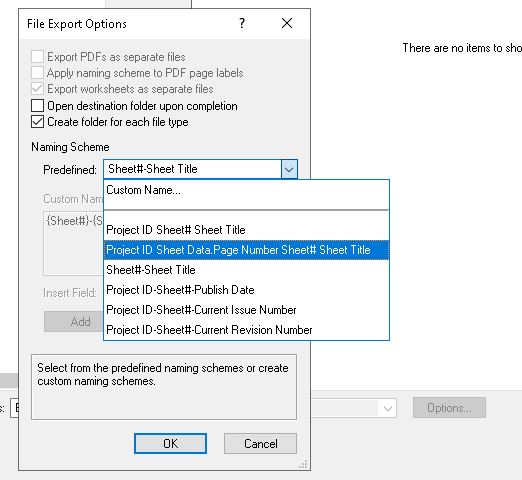
-
 2
2
-
-
I have been able to modify the "...\Plug-Ins\Common\Data\PubliemNames.xml" to move my options to the top of the list but is there any way to make mine default. It always defaults to "Sheet#-Sheet Title". Even if I delete it from the list my option is not default.
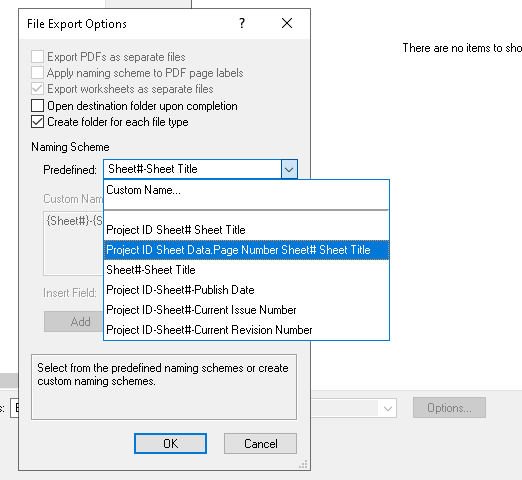
-
With these mew advancements in the VGM will Vectorworks run faster on a Mac than a PC or are the advantages equal?
-
Please add a don't show this again check box on the following messages when using the Eyedropper and Data Visualization.
or
Maybe a suppress messages for the rest of the drawing session.
"Object has Data Visualization attribute overrides applied. but the original attributes will be picked up."
and
"Transferred attributes may be hidden by the active Data Visualization"
To many ok's to click..
-
 1
1
-
-
Thank you this works great!!!
-
Is there a script command to open the edit class dialog box. I would like to be able to edit the currently active class or a selected object's class without having to search the long list of classes in the class list.
-
I am looking for a lidar scanner that I can mount on a tripod and scan a space with ease. Typically the spaces are not very large but I want something with decent range, accuracy and no monthly fee to export to Vectorworks. I have been using my iPhone 12 mounted to a tripod and it does not have quite enough range or accuracy. Please give me your recommendations.
-
Data Visualization should be able to set the line weight without changing the line type.
-
 1
1
-
-
8 hours ago, station said:
You can put data tags within symbols
That’s cool but I wish you could tag symbols from outside the symbol.
-
-
I recommend using classes to define the data visualization of the doors and window in sections.
See attached.
-
I do not believe it is possible to tag items in a symbol. You can tag the symbol but not the data within.
-
7 hours ago, Mi&D said:
Isn't there a way to make section work the same way as floor plans?
Not to my knowledge. Sections are a bit difficult to work with sometimes. I have not had a lot of experience with the section viewports.
-
1 hour ago, MaltbyDesign said:
I work in the Architect Workspace and it doesn't show the option to Export to Unreal Datasmith. It does show up in the Architect-BIM and Fundamentals workspaces, though. How can I get this to show up in the Architect workspace? Or do I have to go into a different workspace when I want to export a file?
You have to edit the Architect Workspace that you are using. The new command can be found in the import/export options on the left side of the editor. Move it to the right side of the editor.
-
 1
1
-
-
2 hours ago, Mi&D said:
It should be possible for me changing the colors of Data Visualization of your template.
Yes, just modify the Data Visualization settings.
-
Pat answered the question well. You can combat this with class settings and possibly layering viewports. I would recommend watching the RENDERING FOR EVERYDAY ARCHITECTURAL DRAWING course.
Also I have revised by scripts and they are below.
A word of caution they use a different record. I revised the record to be "Status and Phase" to be more inline with the way others were using the terminology. I also added records for demolition and new construction notes. I would recommend not converting to the new format on an existing drawing because the new scripts do not work with the older data visualizations that I provided in the first files. But if you do want to I have written another script to convert a drawing using the old script to the new scripts. script = "Convert to new Status and Phase record script from old Record"
You have to import the "Status and Phase" record into the old drawing before running the conversion script. It will convert everything with out selection. All of my Python Scripts may be freely distributed. No warranty provided. Use at your own risk. (Download newest versions below)
Once you replace the scripts in you plugin folder the old record format will not work.
Adding notes to the record you can use data tags to show the notes
-
 1
1
-
-
In trying out the new Export Unreal Datasmith many of the objects in my model are not present in Twinmotion. Has anyone else tried this? Is there a limit to the amount of objects that can be exported?
-
On 2/12/2021 at 2:27 PM, JBenghiat said:
I think the issue is that you just keep appending handles into hVP. As above, this is where using return values instead of globals would make this clear.
Fixed it. Thanks!
ecnt = reset = xP = yP = vcnt = ocnt =scnt= mcnt= pcnt = 0 def count(h4): global vcnt, ocnt, mcnt, ecnt,scnt,pcnt ocnt += 1 if vs.GetTypeN(h4) == 5: vcnt += vs.GetVertNum(h4) if vs.GetTypeN(h4) == 21: vcnt += vs.GetVertNum(h4) if vs.GetTypeN(h4) == 25: vcnt += vs.GetVertNum(h4) if vs.GetTypeN(h4) == 40: mcnt += 1 if vs.GetTypeN(h4) == 24: ecnt += 1 if vs.GetTypeN(h4) == 84: ecnt += 1 if vs.GetTypeN(h4) == 95: ecnt += 1 if vs.GetTypeN(h4) == 34: ecnt += 1 if vs.GetTypeN(h4) == 15: scnt += 1 if vs.GetTypeN(h4) == 86: scnt += 1 def DoIt(h5): global reset,xP,yP, vcnt, ocnt, mcnt,scnt, ecnt,pcnt vs.ForEachObjectInList(count, 0, 2, vs.FInSymDef(h5)) vs.SetRecord(h5,'Obj Count') vs.SetRField(h5,'Obj Count','Obj Count',vs.Num2Str(0,ocnt)) vs.SetRField(h5,'Obj Count','Vertex Count',vs.Num2Str(0,vcnt)) vs.SetRField(h5,'Obj Count','Mesh Count',vs.Num2Str(0,mcnt)) vs.SetRField(h5,'Obj Count','3D Volume Count',vs.Num2Str(0,ecnt)) vs.SetRField(h5,'Obj Count','Nested Symbol Count',vs.Num2Str(0,scnt)) vs.SetRField(h5,'Obj Count','PIO Count',vs.Num2Str(0,pcnt)) vcnt = ocnt = mcnt = ecnt =scnt =pcnt = 0 #reset to variable to 0 vs.Symbol(vs.GetSDName(h5),xP,yP,0) xP += 300 if xP > 5000: xP = 0 yP += 300 if vs.GetObject('Obj Count') == []: vs.NewField('Obj Count', 'Obj Count', '0', 4, 0) vs.NewField('Obj Count', 'Vertex Count', '0', 4, 0) vs.NewField('Obj Count', 'Mesh Count', '0', 4, 0) vs.NewField('Obj Count', '3D Volume Count', '0', 4, 0) vs.NewField('Obj Count', 'Nested Symbol Count', '0', 4, 0) vs.NewField('Obj Count', 'PIO Count', '0', 4, 0) hSEL = [] h1 =vs.FSymDef() while h1 != []: hSEL.append(h1) if vs.GetTypeN(h1) == 92: h2 = vs.FInGroup(h1) while h2 != []: hSEL.append(h2) h2 = vs.NextObj(h2) h1 = vs.NextObj(h1) for h in hSEL: if vs.GetTypeN(h) == 16: DoIt(h)
-
In def DoIt(h5): I am resetting the variables vcnt, ocnt, and mcnt to 0 but when it runs for h4 in hVP: the variables return to their state the last time def count(h4): was triggered by for h4 in hVP:. I want vcnt, ocnt, and mcnt to be 0 every time the for h4 in hVP: loop starts. Help please.
I am checking the state of the variable at this point it the below script
vs.SetRField(h5,'Obj Count','Obj Count',vs.Num2Str(0,ocnt))
vs.AlrtDialog(ocnt) #Displays current count but for somereason is adding the previous count to the current count
vcnt = ocnt = mcnt = 0 #reset to variable to 0
vs.AlrtDialog(ocnt) #displays that variable has been reset to 0reset = xP = yP = vcnt = ocnt = mcnt = 0 def count(h4): global vcnt, ocnt, mcnt ocnt += 1 if vs.GetTypeN(h4) == 5: vcnt += vs.GetVertNum(h4) if vs.GetTypeN(h4) == 21: vcnt += vs.GetVertNum(h4) if vs.GetTypeN(h4) == 40: mcnt += 1 def DoIt(h5): global reset,xP,yP, vcnt, ocnt, mcnt if h5 != []: if vs.GetTypeN(h5) == 16: GetHandles(h5) for h4 in hVP: count(h4) vs.SetRecord(h5,'Obj Count') vs.SetRField(h5,'Obj Count','Obj Count',vs.Num2Str(0,ocnt)) vs.AlrtDialog(ocnt) #Displays current count but for somereason is adding the previous count to the current count vcnt = ocnt = mcnt = 0 #reset to variable to 0 vs.AlrtDialog(ocnt) #displays that variable has been reset to 0 vs.SetRField(h5,'Obj Count','Vertex Count',vs.Num2Str(0,vcnt)) vs.SetRField(h5,'Obj Count','Mesh Count',vs.Num2Str(0,mcnt)) vs.Symbol(vs.GetSDName(h5),xP,yP,0) xP += 300 if xP > 5000: xP = 0 yP += 300 def GetHandles2(h1): while h1 != []: hSEL.append(h1) if vs.GetTypeN(h1) == 92: h2 = vs.FInGroup(h1) while h2 != []: hSEL.append(h2) h2 = vs.NextObj(h2) h1 = vs.NextObj(h1) def GetHandles(h5): h2=vs.FInSymDef(h5) while h2 != []: hVP.append(h2) itParent = vs.GetTypeN(h2) # Get Parent type if itParent == 11: h3 = vs.FInGroup(h2) while h3 != []: hVP.append(h3) h3 = vs.NextObj(h3) h2 = vs.NextObj(h2) if vs.GetObject('Obj Count') == []: vs.NewField('Obj Count', 'Obj Count', '0', 4, 0) vs.NewField('Obj Count', 'Vertex Count', '0', 4, 0) vs.NewField('Obj Count', 'Mesh Count', '0', 4, 0) hVP = [] hSEL = [] GetHandles2(vs.FSymDef()) for h5 in hSEL: if vs.GetTypeN(h5) == 16: DoIt(h5)
-
Thanks I have that working but now my counts and my symbol placements are off. My counts keep adding to the last symbols count and each symbol is being placed dead center in the drawing. They should be moving 300 to the right until 5000 is reached then move up 300 and so on.
def DoIt(h5): global ocnt, vcnt, mcnt,reset ocnt = 0 vcnt = 0 mcnt = 0 reset = 0 xP = 0 yP = 0 if h5 != []: if vs.GetTypeN(h5) == 16: GetHandles(h5) reset = 0 for h4 in hVP: count(h4) reset = 0 vs.SetRecord(h5,'Obj Count') vs.SetRField(h5,'Obj Count','Obj Count',vs.Num2Str(0,ocnt)) vs.SetRField(h5,'Obj Count','Vertex Count',vs.Num2Str(0,vcnt)) vs.SetRField(h5,'Obj Count','Mesh Count',vs.Num2Str(0,mcnt)) vs.Symbol(vs.GetSDName(h5),xP,yP,0) xP = xP + 300 if xP > 5000: xP = 0 yP += 300 def count(h4): global ocnt, vcnt, mcnt,reset if reset != 1: ocnt = 0 vcnt = 0 mcct = 0 ocnt = ocnt + 1 if vs.GetTypeN(h4) == 5: vcnt = vcnt + vs.GetVertNum(h4) if vs.GetTypeN(h4) == 21: vcnt = vcnt + vs.GetVertNum(h4) if vs.GetTypeN(h4) == 40: mcnt = mcnt+ 1 reset = 1 def GetHandles2(h1): while h1 != []: hSEL.append(h1) if vs.GetTypeN(h1) == 92: h2 = vs.FInGroup(h1) while h2 != []: hSEL.append(h2) h2 = vs.NextObj(h2) h1 = vs.NextObj(h1) def GetHandles(h5): h2=vs.FInSymDef(h5) while h2 != []: hVP.append(h2) itParent = vs.GetTypeN(h2) # Get Parent type if itParent == 11: h3 = vs.FInGroup(h2) while h3 != []: hVP.append(h3) h3 = vs.NextObj(h3) h2 = vs.NextObj(h2) if vs.GetObject('Obj Count') == []: vs.NewField('Obj Count', 'Obj Count', '0', 4, 0) vs.NewField('Obj Count', 'Vertex Count', '0', 4, 0) vs.NewField('Obj Count', 'Mesh Count', '0', 4, 0) hVP = [] hSEL = [] GetHandles2(vs.FSymDef()) for h5 in hSEL: if vs.GetTypeN(h5) == 16: DoIt(h5)
-
global ocnt, vcnt, mcnt ocnt = 0 vcnt = 0 mcnt = 0 def count(h4): ocnt += 1 if vs.GetTypeN(h4) == 5: vcnt += vs.GetVertNum(h4) if vs.GetTypeN(h4) == 21: vcnt += vs.GetVertNum(h4) if vs.GetTypeN(h4) == 40: mcnt += 1 def GetHandles2(h1): while h1 != []: hSEL.append(h1) if vs.GetTypeN(h1) == 92: h2 = vs.FInGroup(h1) while h2 != []: hSEL.append(h2) h2 = vs.NextObj(h2) h1 = vs.NextObj(h1) def GetHandles(h5): h2=vs.FInSymDef(h5) while h2 != []: hVP.append(h2) itParent = vs.GetTypeN(h2) # Get Parent type if itParent == 11: h3 = vs.FInGroup(h2) while h3 != []: hVP.append(h3) h3 = vs.NextObj(h3) h2 = vs.NextObj(h2) def DoIt(h5): ocnt = 0 vcnt = 0 mcnt = 0 if h5 != []: if vs.GetTypeN(h5) == 16: GetHandles(h5) for h4 in hVP: count(h4) vs.SetRecord(h5,'Obj Count') vs.SetRField(h5,'Obj Count','Obj Count',vs.Num2Str(0,ocnt)) vs.SetRField(h5,'Obj Count','Vertex Count',vs.Num2Str(0,vcnt)) vs.SetRField(h5,'Obj Count','Mesh Count',vs.Num2Str(0,mcnt)) vs.symbol(vs.GetSDName(h5),xP,yP,0) xP = xP + 300 if xP >= 5000: xP = 0 yP = yP + 300 xP =0 yP =0 if vs.GetObject('Obj Count') == []: vs.NewField('Obj Count', 'Obj Count', '0', 4, 0) vs.NewField('Obj Count', 'Vertex Count', '0', 4, 0) vs.NewField('Obj Count', 'Mesh Count', '0', 4, 0) hVP = [] hSEL = [] GetHandles2(vs.FSymDef()) for h5 in hSEL: if vs.GetTypeN(h5) == 16: DoIt(h5)
What am I doing wrong?
keep getting 'ocnt' referenced before assignment error.
-
I would like to be able to show dimensions where the dimension label has been overwritten. This would be dimension that have "Show Dim Value" turned off. Data visualization does not have a call for dimensions. I have looked at the script output for a dimension and I don't see how I could query this information either. If some one knows how please inform me. If not I would like to add dimensions to the Data Visualization Wishlist.
-
[UsrLib]/Defaults\Notes\
and
[VW]/Defaults\Notes\
are the two locations that Vectorworks looks for databases
Why does it not look in workgroup folders?
What would the abbreviation for workgroup folders be? I have tried [WkgLib] [WG] and [Wkg]




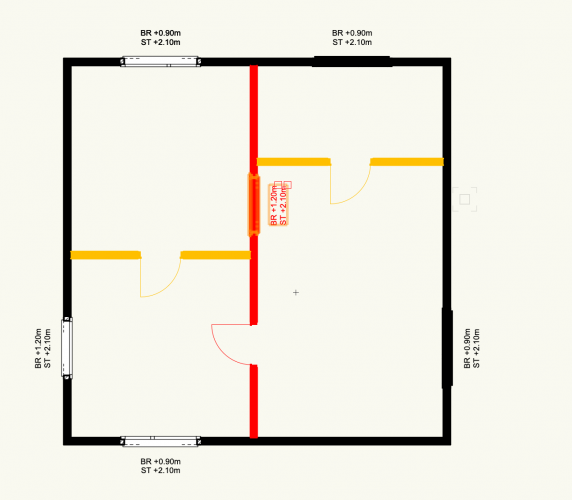
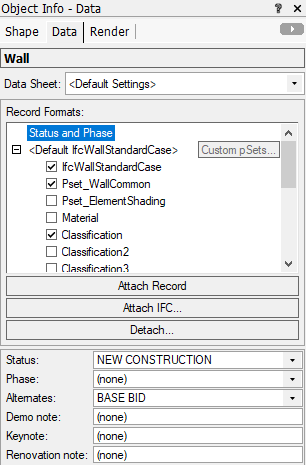
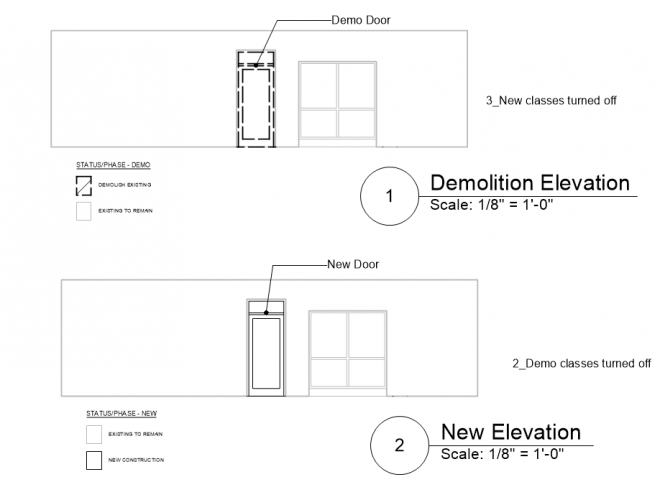
Add ability to Purge Screen Plane Objects in VW2022
in Wishlist - Feature and Content Requests
Posted
I wrote a simple python script that may help.
Script Screen Plane to Layer Plane.vwx